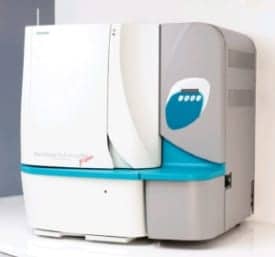By Jonathan Briggs
The National Cholesterol Education Program (NCEP) of the National Heart, Blood and Lung Institute recently issued its first major update in several years to the clinical practice guidelines on the prevention and management of high cholesterol in adults. The new guidelines, referred to as Adult Treatment Panel III, or ATP III, are tougher than the old guidelines. Thus many more patients, who are unable to control those levels through diet and exercise, will end up taking cholesterol-lowering medication.
To help educate laboratorians on how the guideline changes will affect both the laboratory and the clinical aspects of lipid management, the American Association for Clinical Chemistry held an audio-conference, sponsored by Cholestech, on the changes. Presenters Robert Christenson, Ph.D., director of clinical chemistry and Michael Miller, M.D., director of preventive cardiology, both from the University of Maryland, Baltimore, reviewed the new ATP III guidelines and then answered questions.
ATP III
The ATP III guidelines, the third set of recommendations published by the NCEP, retain many of the guidelines in first two ATP reports but extends their scope. For example, the primary target for cholesterol-lowering therapy has been and continues to be LDL cholesterol.
ATP III significantly expands the indications for intensive cholesterol-lowering therapy. Although it maintains a strong focus on the treatment of patients with coronary heart disease (CHD), it puts significant new attention on the primary prevention of CHD in persons with multiple risk factors. As the guidelines put it, “risk assessment requires measurement of LDL cholesterol as part of lipoprotein analysis and identification of accompanying risk determinants.” The table below shows the primary differences between ATP II and ATPIII with regard to lipid management.
One sure outcome of the new guidelines will be an increase in both the volume and types of lipid testing. The very first ATP III lipid testing recommendation directs clinicians to use, “a complete lipoprotein profile (total cholesterol, LDL cholesterol, HDL cholesterol and triglycerides) as the preferred initial test.”
Christenson was surprised that triglyceride level testing was not required in the ATP II, but noted that if the Friedewald calculation is used, it is implicit that the test will be done because it is required for the calculation. Christenson believes that reporting all four lipoproteins — LDL, HDL, total cholesterol and triglycerides — at the outset of a patient evaluation is important, even if the triglycerides are not an immediate focus. “This correlates to what many European physicians have been using for many years,” Christenson said. “They have considered elevated triglycerides an independent risk factor for many years.”
In addition to dyslipidemia, the primary risk factors that ATP III incorporates are familiar and well established: cigarette smoking; hypertension (BP (140/90 mmHg or on antihypertensive medication); Low HDL cholesterol (<40mg/dl); family history of premature CHD; and age men (45 years); women (55 years). The new guidelines also consider diabetes a CHD risk equivalent and an HDL of (60 as a “negative” risk factor.
Using the new lipoprotein levels in combination with the risk factors and information from the Framingham heart study, a patient’s short- and long-term risk status is determined. The type of therapy needed depends on the outcome of the risk assessment.
|
||||||||||||
|
Changes for the laboratory
Laboratories will need to make several changes including updating interpretive ranges and report forms. Moreover, the greater use of risk factors such as smoking and blood pressure raises the question of how to incorporate these items into lab reports.
Christenson suggested that creativity is the key. “We try to strike a balance between including lots of information on forms and providing the appropriate interpretive comments,” he said. “The challenge is to find a way to link to patient information, so we can provide an interpretation based on that data. It is something many of us are struggling with now.”
Standardization in LDL testing is another concern for Christenson and other clinicians. Christenson commended the good work done by the Centers for Disease Control and others who worked to standardized cholesterol measurements a decade ago. “This makes it possible now for everyone involved to understand what a total cholesterol of 230 means,” he said. “Unfortunately this is not true for all analytes. It is going to be a major challenge for us to standardize triglyceride values and have them match up with the cholesterol values of the past. The folks who did the cholesterol standardization years ago did a model job. We’ve got to keep with that model to be sure the other analytes here (in the ATP III) and in the future are well matched.”
One future analyte of interest includes the troponin group, which Christenson hopes will soon achieve the same standardization as cholesterol. Two other future analytes are C-Reactive Protein (CRP) and homocysteine.
“We (University of Maryland) are using a number of these so-called nontraditional risk factors in the overall assessment,” said Miller, “particularly in individuals who have a strong family history of heart disease or in addition to a family history have premature heart disease. With these patients, we do an amalgam of tests including CRP, homocysteine and LP(a). The data have been pretty compelling to show that these are risk factors. Although we don’t have data yet showing that lowering CRP or lowering homocysteine or lowering LP(a) impacts on coronary event rates.”
When asked for recommendations on when to use lipoprotein electrophoresis and its interpretation, Miller replied,” The issue of non-HDL is going to be a little trickier for physicians, although it is useful. The inverse of the non-HDL is the total [cholesterol] to HDL ratio. Again, it is considered a secondary goal — the LDL is the primary goal. However, we incorporate that into our practice. At the University of MD our goal is triglycerides below 100. So we work to get LDL and trigs below 100. It’s going to vary from institution to institution.
Something else on the horizon
“There is something else on the horizon,” Christenson said, introducing the issue of direct versus calculated LDL levels. “This is a major target of intervention and monitoring. Although direct methods are showing quite good CVs, I think the correlation between the Friedewald calculation and direct LDL has been somewhat mixed. Maybe we need to clearly designate these at different tests. We may never be able to get perfect or even excellent agreement between these two methods because we are focusing on different entities when we precipitate out APOA1 AND THE APO E1 parts. I see that as our biggest challenge — the direct versus the calculated LDL.”
Reimbursement
Christenson calls reimbursement “a moving target,” and noted that it takes time for it to catch up with new guidelines. “When new policy will be available is anyone’s guess,” he said. “Laboratories should contact their local carriers to find out their policy on the new recommendations, particularly direct LDL measurement.”
In his summary, Christenson remarked that the four most important things with regard to the laboratory’s interaction with clinicians and the new ATP III guidelines are education and then communication, communication and communication.” This is good advice considering that coronary artery disease is the biggest killer in the United States. Cholesterol and new guidelines are important because 35 percent of all people with coronary heart disease have a total cholesterol level below 200; they are not even in the borderline risk group. The new guidelines call for a more aggressive approach to these patients. Current data show that about 13 million Americans taking lipid lowering drugs. It is estimated that about 20 million more will be added to those numbers with the institution of these new guidelines. That will bring the number of Americans on cholesterol lowering drugs to an astounding one in five.
Seems it’s high time for Americans to break out those walking shoes and start counting those saturated fat grams.


